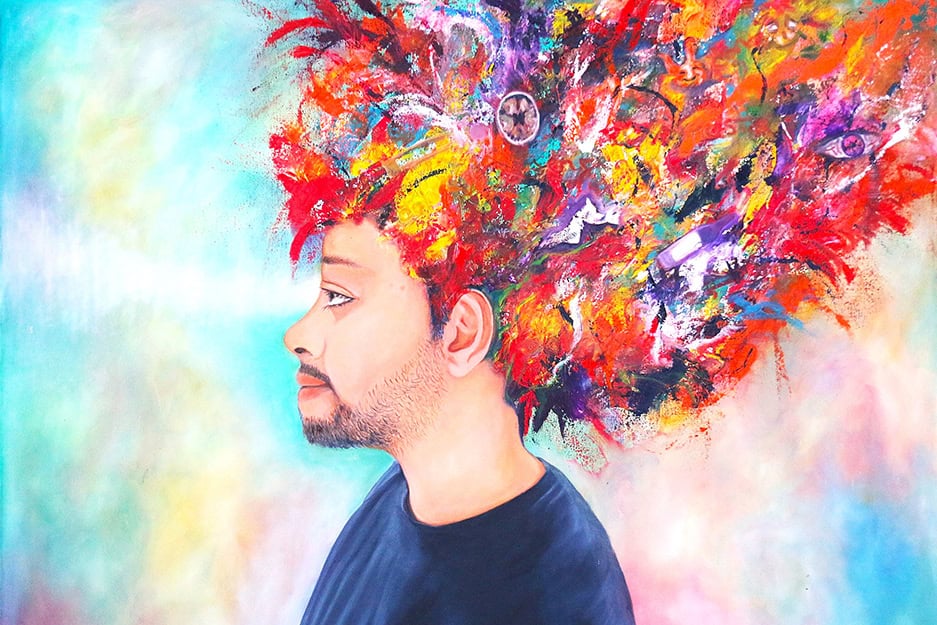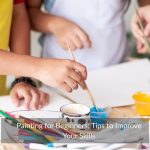
In a world full of noise, stress, and distractions, mental health has become one of the most vital areas of our overall well-being. From anxiety and depression to burnout and emotional fatigue, the modern lifestyle can take a toll on our minds. While there are many paths to healing and self-care, painting stands out as a powerful, accessible, and deeply personal tool for mental health improvement.
Whether you’re a seasoned artist or someone who has never touched a brush before, painting offers unique psychological and emotional benefits. This blog explores how painting can positively impact your mental health and why it might be the creative therapy you’ve been looking for.
Painting Helps to Reduce Stress
One of the most immediate effects of painting is stress reduction. The simple act of putting brush to canvas helps to slow down the racing thoughts in our heads. It shifts our focus from external chaos to internal calm.
When you’re absorbed in painting, your mind enters a state of “flow”—a meditative focus that allows worries to fade away. This deep level of concentration can help reduce cortisol levels, the hormone associated with stress, bringing a sense of relaxation and calmness.
A Safe Way to Express Emotions
Many people find it difficult to articulate their emotions with words. Painting offers a non-verbal outlet to express feelings—whether it’s anger, sadness, joy, or confusion.
Color choices, brush strokes, and subject matter often reflect what’s happening inside emotionally. By translating feelings into visuals, painting allows for emotional release, helping to prevent emotional buildup or mental breakdowns.
Even abstract art, which doesn’t follow realistic forms, can powerfully communicate emotions and serve as a mirror to the subconscious mind.
Encourages Mindfulness and Present Moment Awareness
Mindfulness—the practice of being fully present in the moment—is widely recommended for improving mental health. Painting is, by nature, a mindful activity. It requires attention, presence, and engagement with the here and now.
Mixing colors, adjusting details, and observing patterns help train the mind to stay in the present, reducing intrusive thoughts and anxiety about the past or future. Many therapists even use art-based mindfulness exercises to help clients ground themselves during emotional distress.
Boosts Self-Esteem and Confidence
Completing a painting, no matter how simple or abstract, brings a sense of accomplishment. For people struggling with depression or low self-worth, this feeling can be incredibly empowering.
Each finished piece serves as a reminder: I created something. I can achieve something. Over time, this boosts self-confidence, fuels positive self-talk, and encourages individuals to tackle other areas of their life with a stronger mindset.
Builds Community and Reduces Loneliness
While painting is often a solitary activity, it also offers opportunities for social connection. Community art classes, online painting groups, and workshops can connect individuals who share similar interests and emotional journeys.
This social aspect is crucial in combating isolation and loneliness, both of which are significant risk factors for mental illness. Even sharing your artwork on social media can lead to encouragement, constructive feedback, and a sense of belonging.
Acts as a Therapeutic Tool (Art Therapy)
Painting is a key component of art therapy, a psychological approach that uses creative processes to help individuals explore their emotions, develop self-awareness, and cope with trauma or stress.
Licensed art therapists guide patients through creative exercises that are often more revealing and healing than traditional talk therapy. This method is particularly effective for children, trauma survivors, or anyone who finds it hard to express themselves verbally.
Stimulates Brain Function and Emotional Regulation
Creating art activates several parts of the brain, including those responsible for emotion, memory, and decision-making. The act of planning a painting, choosing colors, and interpreting your own or others’ work engages both the analytical and emotional sides of the brain.
This stimulation helps in emotional regulation, improving focus, and even enhancing memory in older adults. In fact, painting has been shown to have positive effects on cognitive function, especially in patients with Alzheimer’s or dementia.
Final Thoughts
You don’t need to be an artist or have expensive tools to experience the mental health benefits of painting. A basic set of paints, some paper, and a willingness to explore your inner world are enough to get started.
In a time when mental health needs as much care as physical health, painting offers a gentle yet profound way to heal, express, and grow. Whether it’s to unwind after a stressful day, to express emotions, or simply to reconnect with yourself, painting can be more than a hobby; it can be a form of therapy. So pick up that brush. Let your feelings flow onto the canvas. Your mind will thank you.



